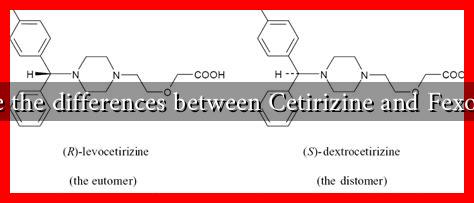-
Table of Contents
- What are the Differences Between Cetirizine and Fexofenadine?
- Understanding Antihistamines
- Cetirizine: Overview and Characteristics
- Mechanism of Action
- Side Effects
- Fexofenadine: Overview and Characteristics
- Mechanism of Action
- Side Effects
- Comparative Analysis: Cetirizine vs. Fexofenadine
- Conclusion
What are the Differences Between Cetirizine and Fexofenadine?
Allergies can be a significant nuisance, affecting millions of people worldwide. Fortunately, antihistamines like Cetirizine and Fexofenadine offer relief from allergy symptoms. While both medications are effective, they have distinct differences that can influence a patient’s choice. This article explores the key differences between Cetirizine and Fexofenadine, including their mechanisms of action, side effects, and usage guidelines.
Understanding Antihistamines
Antihistamines are medications that counteract the effects of histamine, a substance produced by the body during allergic reactions. They are primarily used to treat symptoms such as:
- Runny or itchy nose
- Itchy or watery eyes
- Sneezing
- Hives
Both Cetirizine and Fexofenadine belong to the second generation of antihistamines, which are designed to minimize sedation compared to first-generation antihistamines.
Cetirizine: Overview and Characteristics
Cetirizine, commonly known by its brand name Zyrtec, is an antihistamine that is widely used for the treatment of allergic rhinitis and chronic urticaria (hives). It is known for its effectiveness and relatively quick onset of action.
Mechanism of Action
Cetirizine works by selectively blocking peripheral H1 receptors, which helps to alleviate allergy symptoms. It has a moderate sedative effect, which can be beneficial for individuals who experience nighttime allergy symptoms.
Side Effects
While Cetirizine is generally well-tolerated, some common side effects include:
- Drowsiness
- Dry mouth
- Dizziness
- Fatigue
According to a study published in the Journal of Allergy and Clinical Immunology, approximately 10-15% of users report drowsiness as a side effect.
Fexofenadine: Overview and Characteristics
Fexofenadine, marketed under the brand name Allegra, is another popular antihistamine used to treat seasonal allergies and chronic urticaria. It is known for its non-sedating properties, making it a preferred choice for many individuals.
Mechanism of Action
Fexofenadine works by blocking H1 receptors without crossing the blood-brain barrier, which significantly reduces the risk of sedation. This makes it an ideal option for those who need to remain alert during the day.
Side Effects
Fexofenadine is generally well-tolerated, with fewer side effects compared to Cetirizine. Common side effects include:
- Headache
- Nausea
- Dizziness
Research indicates that less than 5% of users experience significant drowsiness, making it a safer option for those who operate machinery or drive.
Comparative Analysis: Cetirizine vs. Fexofenadine
When choosing between Cetirizine and Fexofenadine, several factors should be considered:
- Onset of Action: Cetirizine typically takes about 1 hour to start working, while Fexofenadine may take up to 2 hours.
- Duration of Action: Both medications provide relief for 24 hours, but Cetirizine may have a longer-lasting effect in some individuals.
- Sedation: Cetirizine has a higher likelihood of causing drowsiness compared to Fexofenadine.
- Age Considerations: Cetirizine is approved for use in children as young as 6 months, while Fexofenadine is typically recommended for children aged 2 years and older.
Conclusion
In summary, both Cetirizine and Fexofenadine are effective antihistamines that can provide relief from allergy symptoms. The choice between the two largely depends on individual needs and lifestyle considerations. Cetirizine may be more suitable for those who can tolerate mild sedation, while Fexofenadine is ideal for individuals who require a non-sedating option. Always consult with a healthcare provider to determine the best treatment plan for your specific allergy symptoms.
For more information on allergy treatments, you can visit the Asthma and Allergy Foundation of America.


